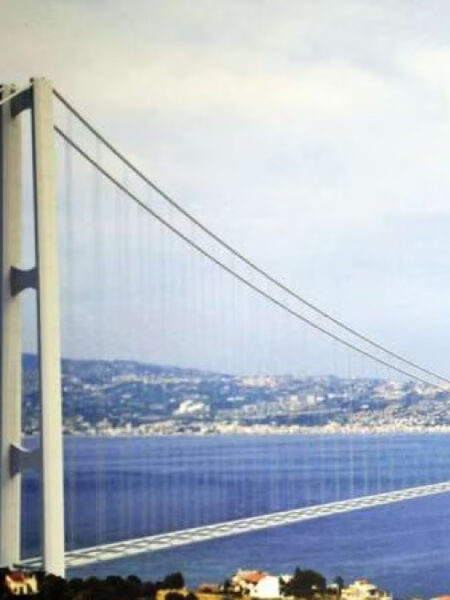Introduction
The world of aviation is a rather new field of mobility. The so called “aeromobility” has developed over the last century and became one of the major force for Globalization. From the first Aerodyne in 1903 – the Wright Flyer – to the Concorde in the last third of the 20th century, where people were able to travel from New York to London in around three hours, shows the rapid change in people’s way how to travel. The jet engine brought the humans together and is also responsible for a “shrinking” globe. Ships still need days and weeks to reach a city on the other hemisphere. Imagine, today you can fly nonstop from London to Australia!
In my research I want to find out, in how far the Coronavirus and its restrictions for aeromobility can be seen as a “caesura” – as a historically spoken significant change of an epoch. The constant growth in the field of aviation generated an enormous infrastructure all over the world – airports, flight safety and control institutions, airplane manufactures, but also motorways or train routes, which connect cities to their “gates to the world” were built. Also pilots, crews, flight controller or security guards were trained to allow these complex operations. My question: Is the Corona-pandemic a caesura for global (im)mobility?
The historiography allows us to change our focus from the retro-perspective in an actual context – here I combine the permanent growth, the historic development, with the concept and theory of caesuras as a significant turn of epochs. To prove my thesis that the Corona-pandemic can be seen as a caesura for the global aeromobility, I will interview people that work in the field of aviation – two experts that both deal with different aspects of the field of aviation day for day. In combination of the concept of oral history, I will also take secondary sources to “tell the story” of the “History of Aviation” in subchapters. I want to refer to the “Dream of Flying”, “Caesuras in the History of Aviation”, the development of aviation and the physics behind it in “The Development of Aviation: Airships and Airplanes – lighter and heavier as air” and “Aeromobilities and Globalization”. Bringing together these developments with the chapter “Corona and Aviation”, I will take mostly statistics and references by the ICAO (International Civil Aviation Organization), the IATA (International Air Transport Association) and the WHO (World Health Organization).
The History of Aviation
The Dream to Fly
It has always been the “Dream to Fly” that brought so many people to death or fatal injuries and not much more than one hundred years before it was not common to see airplanes flying save around the globe. The Ancient Greek methodology also shows early impressions of the wish to overcome human physiognomic limitations to fly once: It is the story of Daedalus and Icarus who wanted to escape the King Minos of Crete’s Labyrinth, but crashed with their wings built out of feathers and wax into the Mediterranean sea. Also in the Middle Ages the famous polymath Leonardo daVinci delineated first models of helicopters.
It has always been a problem of control – Otto Lilienthal was one of the first people who understood how it can be possible to fly, but he could not manage his Aerodine. The three axis (pitch, roll and yaw) were first time controlled by Louis Blériot – a French pioneer who flew for the first time across the English Channel from Calais to Dover.1 Beginning in that time the last years of the 19th century and first years of the 20th century aviation became a science – the aerodynamic.2 The age of pioneers has its height during that period of time, but the first human that ever flew used a balloon. On 21st November 1783 the so called Montgolfière can be seen as the first vehicle in the air. But it took around one hundred years that Lilienthal invented his flyer. He tried to imitate the flight of birds with his construction of special formed wings. Lilienthal died in 1896 after he never recovered from a tragic accident with his flyer.3
So what we see is that there exist two physical ways of becoming airborne – the concept of lighter and heavier as air. Today, airplanes fly, because of the air flow on their special formed wings – a movement on the pitch elevator and the aircraft flies. In opposite to that invention a balloon or an airship becomes airborne, due to a gas lighter than air, like helium or the dangerous hydrogen – or an extreme heated air that moves in a locked room (the balloon) up. In the first years of the 20th century both concepts were researched parallel. Nowadays airplanes can be seen as winners of that competition, a result of the limited control, speed, altitude and maneuverability airships and balloons have.
Caesuras in the History of Aviation
Especially in the German-speaking countries historians use the concept of caesuras as a “distinctive break.”4 It describes a historical event that can be seen as a “turn” between two epochs and marks a beginning and end of different phases.5 The term caesura is actually used in music theory and literature.6 Epochs are always constructed by historians afterwards and never during a certain event – so it is not more, but also not less than a desire for order the past and their narratives and consciousness.7 The following caesuras describe the way aviation made from a flyer to an aircraft.
As already mentioned the first flight ever was in 1783 the Montgolfière – lighter than air. It has always been a tactical interest to use the unknown element air for military strategies, but as a consequence of the non-existing control – a balloon can only go up and down – it was a weak military help. The first flight “heavier as air” was in Kitty Hawk/North Carolina 1903. The Wright-brothers flew with their motorized Aerodyne twelve seconds.8
The first flight in Europe was on 12th November 1906 in Paris, where the Brazilian aviation pioneer Santos Dumont took off in his “14-bis”. The rather new field of aviation developed rapidly between 1909 and 1914 from an object of curiosity to a modern vehicle.9 A time specification that is marked by Louis Blériot’s flight across the English Channel in July 1909 to the beginning of the First World War in 1914.10
As the Belgian Hélène Dutrieu showed in December 1911 with a speed record of 50mph (80 kph) aviation became more and more complex, also dangerous, it needs to be learned – especially the landing – it could be a great chance for the world: air-post, a faster communication and a better transportation for passengers developed, but aviation also became relevant in the First World War for bombing and conquer – unfortunately just killing.11
The Development of Aviation: Airships and Airplanes – lighter and heavier than air
During the two World Wars aviation developed quickly. The airplane in comparison to the airship is easier to control, much safer and more mobile. In the end it is a tragic fact that wars can be seen as a time of impulse for new strategic inventions. Also in the cold war – even today – armaments manufacturers dominate the civil aircraft construction like Boeing and Lockheed in the U. S. or Tupolev and Ilyushin in the former Soviet Union.12
Between the World Wars a golden time also for aviation established and the upper-class was first able to take an airplane. The myth of flight attendants developed and also the onboard-entertainment increased – Lufthansa already showed a movie in the 1930s on a flight.13
On 7th December 1944 in Chicago the ICAO was founded – the International Civil Aviation Organization, a UN-sonder-organization. They tried to standardize for the first time the international aviation.14 Codes, abbreviations, maps, manuals, training and also air traffic laws were created – parts that are normality in every flight school today.15
During the Second World War, especially the navigation, radar and radio communication changed the field of aviation significantly. In 1939 the first jet-engine was invented, the Heinkel HE-178 was flying faster and higher than every prop-plane before. But the airplane could also change his reputation to a peaceful narrative in war-damaged regions – the Berlin airlift formed the myth “rosins-bombers” and helped West-Berlin to stay independent from the Communistic and non-democratic East.16
In the 1950s the first transatlantic routes were formed with the Lockheed Super Constellation and later the improvement of the jet- and turbofan-engine brought the world together. The Boeing 707 in the 1960s to the huge Jumbojet Boeing 747 made commercial aviation possible – the people were able to fly, it became less expensive and easier to access.17
The technology became more compact, safer and more efficient. Normal four-engine-airplanes were removed by three-engine-airplanes and today twin-engine-airplanes. The aeromobility developed rapidly in less than a half century to a commercial “normality”.
Aeromobilities and Globalization
The development of aviation meant an “annihilation of time and space” – similar to the importance the railroad had in the 19th century, today the so called aeromobility (airplane-based-mobility) guaranteed a “shrinking globe” – a term that defines distances as easier to overcome especially referred to a reduction of travel-time, although the actual distance never changed – but simultaneously mobility became more and more complex. So airports can be seen as “gates to the world” – like railway stations were in the 19th century as a first enormous act for globalization.18
19 Airports play an important role between and within different regions – they were even built on an artificial island as it is at Japan’s Kansai Airport. They can be seen as melting pots, where people from all over the world following different reasons of their travel are together – either they are traveling for business, educational or pleasure purpose.
“Airports have their own particular logic to them, as they are mobility-circulating machines par excellence. Their size and complexity illustrate a new scale of mobility and network city. They are huge socio-technical systems embedding cosmopolitan lifestyles as well as transnational migration patterns and global cargo flows.” 20
Especially in the last years the market in China, India, Southeast Asia and in the Middle East grew enormously. The access to aviation became global and flying is not a “rich Western thing” anymore.21 But flying an aircraft is not only possible as a Captain in a Jumbo-Jet. Aviation became a hobby for many people and the market for private planes grows constantly.22 It is even possible today to perform a single pilot IFR operation – that means a private pilot can fly alone without a second pilot only with his instruments (IFR – Instrument Flight Rules) and does not have to follow VFR (Visual Flight Rules).23
The Annual Report by the ICAO (International Civil Aviation Organization) gave the following facts: 38 million flight departures, 4.3 billion passengers and the Top 25 Airports in the world “hosted” 1.8 billion passengers – only in 2018!24 Aeromobility became a fact of Globalization.
Corona and Aviation
The Coronavirus
For the first time in December 2019 the local authorities were alarmed, because of an unknown and highly infectious virus. The city of Wuhan/Hubei in China was the place of its first occurrence. The region was under quarantine, but however it spread globally.25 On 11th March 2020 the World Health Organization declared the novel Coronavirus SARS-CoV-2 as a pandemic.
The word “quarantine” has a French origin – “quarante”, which means “forty”. Forty days the ships, arriving from plague-regions, had to wait until they were allowed to enter the harbors. Even at that time mobility was drastically restricted.26
Airplanes – super-spreaders?
Airplanes have two problems concerning their role during a pandemic – there is a risk of transmission in flight and a risk of importation in country.27 That means that airplanes in such a small room can become a super-spreader for the people on board, but also a means of transportation for a disease in a region. To avoid a spread in an aircraft the IATA (International Air Transport Association) recommends to wear a mask and an always faced-foward-position to prevent a face-to-face contact. A big advantage in an aircraft is that the cabin air is filtered and exchanged every three minutes.28 In reaction to arriving passengers also airports have to think about a certain strategy for tests, quarantine and long queues – and interim area are recommended by the Word Health Organization.29
“Shutdown”
The field of aviation never had a bigger crisis before, with such an impact. In total there is a reduction of 45-50% on offered seats compared to 2019. The biggest difference to recognize is the fact that international flights drastically decreased (55-64%) compared to 2019, but the domestic flights – especially in countries like Canada or the U. S. – only had around a third less flights. It shows that international borders are also responsible for a change in handling the Coronavirus.30
Statistics by the International Civil Aviation Organization assume that around 2.5-2.6 billion less passengers compared to 2019 will take the airplane – that means a loss of over a half of the passengers of one year, for example 2018. The biggest contrast to these negative passenger-numbers is the Corgo-business – it grew with a plus of more than 30% significantly compared to 2019.31 Comparing a few numbers concerning the difference that still existed – it is easy to see that Cargo-airports did not have such a high amount of less traffic. DHL- and Cargo-airport Leipzig/Halle only had a third less departures compared to 2019 – the Airport London-City almost 100% less departures. The European flag-carrier like Lufthansa, Iberia or British Airways had in average 80% less flights compared to 2019.32

Summary and Conclusion – Corona as a Caesura for Aviation?
To fly is climate-damaging, but the time for aviation will not be over, because our mobility is still dependent on our global aeromobility and the aviation industry tries to find new materials, new fuels and kerosene, better engines and more efficient airplanes. The global GDP already decreased around 5%33 and in a special way the so called Corona-crisis accelerated certain developments and the airline-industry has now more pressure to find new alternatives for a more attractive and sustainable aviation.
John Urry describes in his article “Climate change, travel and complex futures” two possible scenarios – a “regional warlordism” or a “digital Panopticum”.34 On the one hand the west, mostly in the northern hemisphere, will enable an unregulated climate-change with extreme weather situations and flooding mostly in the southern hemisphere – a growing “regionalism” will be established. On the other hand we could use – as Corona showed – the digital opportunity to communicate without using any cars or airplanes that would be used especially for business-meetings – maybe a chance to change our “mobility-mind”?
On a closer inspection the field of aviation has always been through significant changes – important inventions, modernization and the liberation of the market, but also crisis. Viewing the development of traveling by airplanes, there has been a constant growth since 1945. For sure the Corona-pandemic and its measures to contain the spread of the SARS-CoV-2/COVID-19-virus (e. g. travel ban, quarantine, etc.) have and had a global impact on aeromobility. But according to the expertise my interviewees gave, the literature and the opinion the ICAO (International Civil Aviation Organization) and IATA (International Air Transport Association) have, the market will recover to a “new normal” – the world wants to be connected with their airports as “gates to the world”. The Corona-crisis is more an accelerated break for a new trend and not a cut for the aviation concerning our global mobility.
References and online-sources
- Abzug, Malcolm/Larrabee, Eugene: Airplane Stability and Control, A History of the Technologies That Made Aviation Possible, Cambridge 2002, Cambridge University Press.
- Cresswell, Timothy: On the Move, Mobility in the Modern Western World, New York 2006, Routledge.
- Cwerner, Saulo et al. (ed.): Aeromobilities, New York 2009, Routledge.
- Jensen, Ole B.: Mobile semiotics, in: Adey, Peter et al. (ed.): The Routledge Handbook of Mobilities, London/New York 2014, Routledge, 566-574.
- MacKenzie, David: ICAO, A History of the International Civil Aviation Organization, Toronto 2010, University of Toronto Press.
- Pisano, Dominick: Flight, The Complete History of Aviation, New York 2002, Dorling Kindersley Limited.
- Qasim, Muhammad et al.: Analysis of the Worldwide Corona Virus (COVID-19) Pandemic Trend, A Modelling Study to Predict Its Spread, Dunedin 2020, Centre for Bioengineering & Nanomedicine.
- Voth, Joachim: Trade and travel in the time of epidemicsin, in: Baldwin, Richard/Weder di Mauro, Beatrice: Economics in the Time of COVID-19, London 2020, CEPR Press, 93-96.
- Schöning, Matthias: “Zäsur”, Probleme einer historiographischen Angewohnheit, in: Meierhofer, Christian/Wörner, Jens (ed.): Der Erste Weltkrieg und seine Darstellungsressourcen in Literatur, Publizistik und populären Medien 1899–1929, Göttingen 2015, Universitätsverlag Osnabrück bei V&R unipress, 67-81.
- Urry, John: Mobilities, Cambridge 2007, Polity.
- Urry, John: Climate change, travel and complex futures, The British Journal of Sociology 2008, 59 (2), 261-279.
Internet-sources
in German:
- Dudenredaktion: „Zäsur“, in: Duden online (no publication-date). Internet-URL: »https://www.duden.de/rechtschreibung/Zaesur«, last access on 10th September 2020 at 12:34pm.
- Keller, Sarah: Statistiken zu den Auswirkungen des Coronavirus auf die Luftfahrt, in: statista (published: 10th July 2020). Internet-URL: »https://de.statista.com/themen/6257/coronavirus-und-luftfahrt/«, last access on 04th September 2020 at 10:58pm.
- Sabrow, Martin: Zäsuren in der Zeitgeschichte, in: DocupediaZeitgeschichte (published: 03rd June 2013). Internet-URL: »http://docupedia.de/zg/«, last access on 08th September 2020 at 02:15pm.
- in English:
- International Air Transport Association: COVID-19 and borders: Considerations relating to travel & aviation (pdf), in: IATA (published: ). Internet-URL: »https://www.iata.org/en/programs/safety/health/diseases/«, last access on 04th September 2020 September 04 at 10:54pm.
- International Civil Aviation Organization: Effects of Novel Coronavirus (COVID-19) on Civil Aviation. Economic Impact Analysis, in: ICAO-Air Transport Bureau (published: 12th August 2020). Internet-URL: »https://www.icao.int/sustainability/Documents/COVID-19ICAO_Coronavirus_Econ_Impact.pdf«, last access on 08th September 2020 at 02:20pm.
- International Civil Aviation Organization: Presentation of 2018 Air Transport Statistical Results, in: ICAO-Air Transport Bureau (no publication-date). Internet-URL: »https://www.icao.int/annual-report-2018/Documents/Annual.Report.2018_Air%20Transport%20Statistics.pdf«, last access on 22th September 2020 at 12:43pm.
- Wrld Health Organization: Operational considerations for managing COVID-19 cases or outbreak in aviation: interim guidance, in: WHO (published: 18th March 2020). Internet-URL: »https://apps.who.int/iris/handle/10665/331488«, last access on 08th September 2020 at 02:24pm.
1cf. Abzug, Malcolm/Larrabee, Eugene: Airplane Stability and Control, A History of the Technologies That Made Aviation Possible, Cambridge 2002, Cambridge University Press, 1.
2cf. Abzug/Larrabee 2002; 19-44.
3cf. Pisano, Dominick: Flight, The Complete History of Aviation, New York 2002, Dorling Kindersley Limited, 9.
4Dudenredaktion: „Zäsur“, in: Duden online (no publication-date). Internet-URL: »https://www.duden.de/rechtschreibung/Zaesur«, last access on 10th September 2020 at 12:34pm.
5cf. Schöning, Matthias: “Zäsur”, Probleme einer historiographischen Angewohnheit, in: Meierhofer, Christian/Wörner, Jens (ed.): Der Erste Weltkrieg und seine Darstellungsressourcen in Literatur, Publizistik und populären Medien 1899–1929, Göttingen 2015, Universitätsverlag Osnabrück bei V&R unipress, 67-68.
6cf. Schöning 2015; 74.
7cf. Sabrow, Martin: Zäsuren in der Zeitgeschichte, in: DocupediaZeitgeschichte (published: 03rd June 2013). Internet-URL: »http://docupedia.de/zg/«, last access on 08th September 2020 at 02:15pm, 1-4.
8cf. Pisano 2002; 20.
9cf. Pisano 2002; 38.
10cf. Pisano 2002; 40.
11cf. Pisano 2002; 52-53.
12cf. Pisano 2002; 172.
13cf. Pisano 2002; 136.
14cf. MacKenzie, David: ICAO, A History of the International Civil Aviation Organization, Toronto 2010, University of Toronto Press, 24.
15cf. MacKenzie 2010; 179.
16cf. Pisano 2002; 276.
17cf. Pisano 2002; 379.
18Cresswell, Timothy: On the Move, Mobility in the Modern Western World, New York 2006, Routledge, 3-4.
19Urry, John: Mobilities, Cambridge 2007, Polity, 3.
20Jensen, Ole B.: Mobile semiotics, in: Adey, Peter et al. (ed.): The Routledge Handbook of Mobilities, London/New York 2014, Routledge, 570.
21cf. Cwerner, Saulo et al. (ed.): Aeromobilities, New York 2009, Routledge, 2-4.
22cf. Pisano 2002; 422.
23cf. Abzug/Larrabee 2002; 242.
24International Civil Aviation Organization: Presentation of 2018 Air Transport Statistical Results, in: ICAO-Air Transport Bureau (no publication-date). Internet-URL: »https://www.icao.int/annual-report-2018/Documents/Annual.Report.2018_Air%20Transport%20Statistics.pdf«, last access on 22th September 2020 at 12:43pm.
25cf. Qasim, Muhammad et al.: Analysis of the Worldwide Corona Virus (COVID-19) Pandemic Trend, A Modelling Study to Predict Its Spread, Dunedin 2020, Centre for Bioengineering & Nanomedicine.
26cf. Voth, Joachim: Trade and travel in the time of epidemics, in: Baldwin, Richard/Weder di Mauro, Beatrice: Economics in the Time of COVID-19, London 2020, CEPR Press, 93-94.
27cf. International Air Transport Association: COVID-19 and borders: Considerations relating to travel & aviation (pdf), in: IATA (published: 02nd September 2020). Internet-URL: »https://www.iata.org/en/programs/safety/health/diseases/«, last access on 04th September 2020 September 04 at 10:54pm, 2.
28cf. International Air Transport Association 2020; 7.
29World Health Organization: Operational considerations for managing COVID-19 cases or outbreak in aviation: interim guidance, in: WHO (published: 18th March 2020). Internet-URL: »https://apps.who.int/iris/handle/10665/331488«, last access on 08th September 2020 at 02:24pm.
30cf. International Civil Aviation Organization: Effects of Novel Coronavirus (COVID-19) on Civil Aviation. Economic Impact Analysis, in: ICAO-Air Transport Bureau (published: 12th August 2020). Internet-URL: »https://www.icao.int/sustainability/Documents/COVID-19/ICAO_Coronavirus_Econ_Impact.pdf«, last access on 08th September 2020 at 02:20pm, 6-17.
31cf. International Civil Aviation Organization 2020; 153.
32cf. Keller, Sarah: Statistiken zu den Auswirkungen des Coronavirus auf die Luftfahrt, in: statista (published: 10th July 2020). Internet-URL: »https://de.statista.com/themen/6257/coronavirus-und-luftfahrt/«, last access on 04th September 2020 at 10:58pm.
33cf. International Air Transport Association 2020; 17.
34Urry, John: Climate change, travel and complex futures, The British Journal of Sociology 2008, 59 (2), 274.













Dear Christian,
I’ve really enjoyed your approach to studying the social impact of this ongoing pandmic through its effect on the technologies (air travel) that make up our social experience. It reminded me of a book I read a while ago that you might find interesting, which takes a similar approach to the history of technology: Klaus Theweleit – Warum Cortés wirklich siegte. Technologiegeschichte der eurasisch-amerikanischen Kolonialismen.
Viel Spaß!